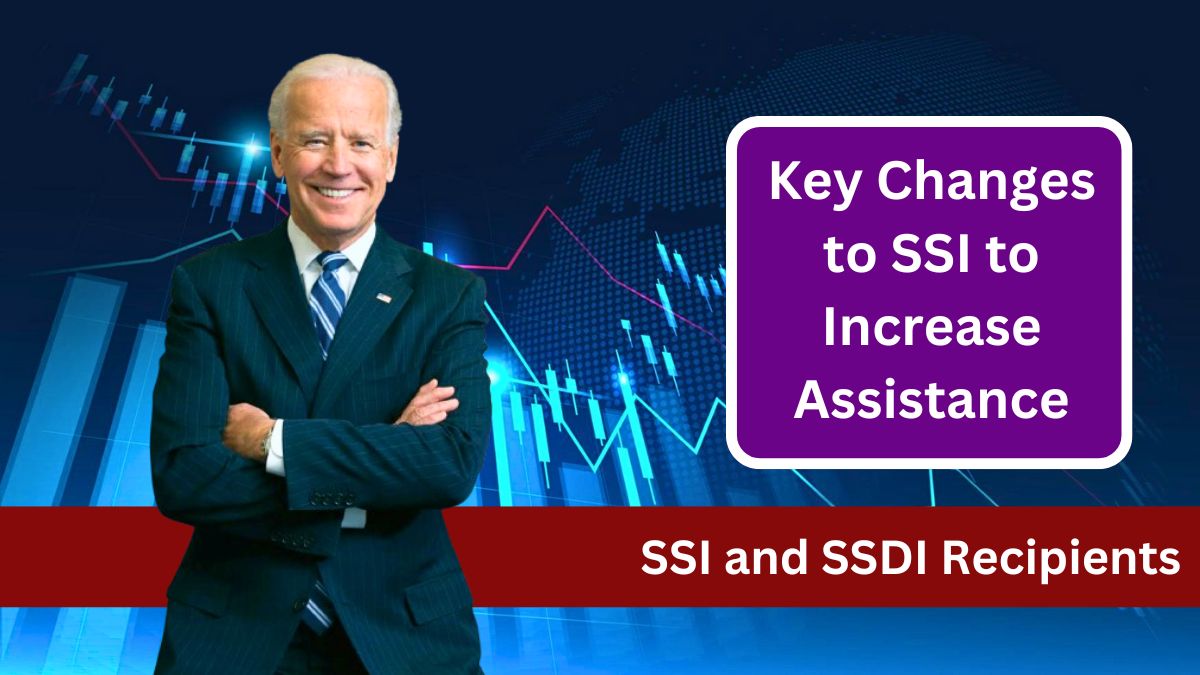The Social Security Administration (SSA) has recently announced three significant changes to its Supplemental Security Income (SSI) program. These updates aim to enhance support for low-income individuals and those with limited resources. By addressing barriers that previously reduced access to financial aid, the SSA hopes to make the program more accessible and improve benefits for eligible recipients.
Food Assistance Penalty
One of the most impactful changes starting this Monday is the elimination of the food assistance penalty. Previously, SSI applicants and recipients could have their benefits reduced if they received informal food support from family, friends, or local networks. This assistance was considered part of the SSA’s In-Kind Support and Maintenance (ISM) calculations, which sometimes led to lower SSI payments.
With this reform, informal food help will no longer count against recipients. As a result, approximately 90,000 people are expected to see an average monthly increase of $131 in their SSI payments. This change helps remove an unfair barrier, ensuring that low-income individuals can access more consistent and reliable financial support.
Impact of the Change
| Type of Assistance | Previous Effect on SSI | New Effect on SSI |
|---|---|---|
| Informal food support | Reduced SSI payment | No reduction in payment |
| Average payment increase | None | $131 for around 90,000 people |
By eliminating this reduction, the SSA offers a crucial boost to those most in need, helping them better manage their daily living expenses without being penalized for receiving informal assistance.
SSI Eligibility Determined
Supplemental Security Income (SSI) was created in the 1970s to provide financial aid to individuals aged 65 or older, blind, or disabled, with limited income or resources. Commissioner Martin O’Malley explains that the program is intended to serve those in critical need of financial support.
To qualify for SSI, an individual’s monthly income must generally be below $1,971, though this threshold can vary depending on factors like marital status or dependents. Other income sources, such as pensions or disability payments, are also considered in the eligibility assessment.
SSI benefits are an important safety net for around 248,300 people in Michigan alone, including 31,576 children and young adults under the age of 18. With these new changes, the SSA hopes to simplify the application process and expand access to the program.
Nationwide Expansion
Another significant update taking effect on Monday is the expansion of the rent subsidy exemption. Previously available in only seven states, this exemption will now be rolled out across the entire U.S. The exemption allows individuals receiving rent subsidies to qualify for SSI without seeing their benefits reduced.
This adjustment is expected to impact around 41,000 individuals, increasing their average monthly payment by $132. For many, rent subsidies are essential to maintaining stable housing, and this change ensures they can continue to receive the full amount of SSI support they need.
Rent Subsidy Exemption Impact
| Before Change | After Change |
|---|---|
| Rent subsidy reduced SSI | Rent subsidy no longer reduces SSI |
| Estimated beneficiaries | 41,000 individuals |
| Average monthly payment increase | $132 |
The nationwide rollout of this exemption will particularly benefit those in low-income housing, allowing more individuals to receive full SSI benefits and helping them maintain financial stability.
SNAP Benefits
The SSA is also updating how public assistance benefits are factored into SSI eligibility. Under this new rule, Supplemental Nutrition Assistance Program (SNAP) benefits will be considered when calculating SSI benefits. This change will simplify the application process for SSI recipients who also receive SNAP.
Previously, all household members receiving public assistance had to be included in the SSI application process, which complicated the procedure and sometimes reduced benefits. With this change, not every member of a household receiving public assistance will need to be considered, allowing more individuals to qualify for SSI and potentially increasing their monthly payments.
This revision is part of the SSA’s broader effort to reduce the reporting burden for applicants and ensure that households receiving food assistance are not penalized when applying for SSI.
These three updates—removal of the food assistance penalty, expansion of the rent subsidy exemption, and inclusion of SNAP benefits—represent a major shift in how the SSI program is managed. By addressing long-standing barriers to accessing benefits, the SSA is making it easier for low-income individuals and those with limited resources to receive the financial assistance they need. With these changes, more people will qualify for SSI, and many recipients will see their monthly payments increase, offering them greater financial security.
FAQs
How much will SSI payments increase with the new changes?
Recipients will see an average increase of $131 per month.
What is the rent subsidy exemption?
It allows SSI recipients to receive rent subsidies without reducing their SSI payments.
Can I get both SSI and SNAP benefits?
Yes, the SSA now includes SNAP in SSI calculations, simplifying the application process.
How does informal food assistance affect SSI payments now?
It no longer reduces SSI payments, thanks to the new SSA policy change.
Who qualifies for SSI?
Individuals aged 65 or older, or those who are blind or disabled with limited income, can qualify.











